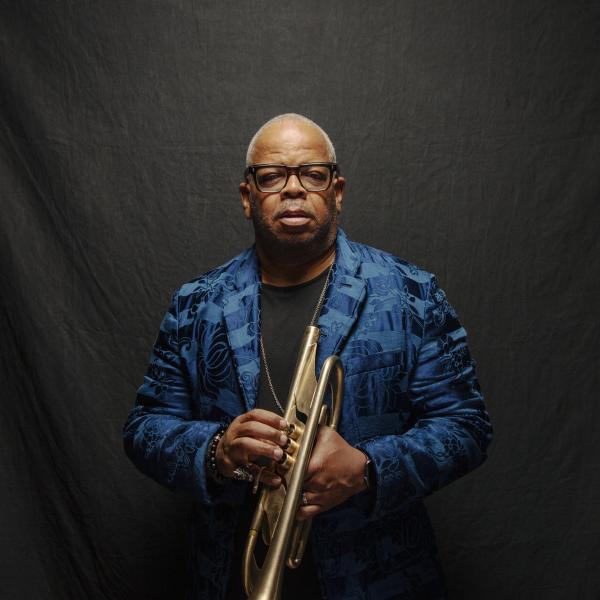Quick Study: April 21, 2022
Jo Reed: Welcome to “Quick Study,” the monthly podcast from the National Endowment for the Arts. This is where we’ll show stats and stories to help us better understand the value of art in everyday life. I’m co-piloting “Quick Study” with Sunil Iyengar. He’s the Director of Research & Analysis here at the Arts Endowment. Hello, Sunil.
Sunil Iyengar: Hi, Jo.
Jo Reed: So what have you got for us today?
Sunil Iyengar: Well, Jo, today I want to talk about federal support for arts programs or therapies for youth who are at risk of entering juvenile justice settings or those who are already within them.
Jo Reed: Aren’t these programs and support for the expanding?
Sunil Iyengar: Yes, they are. In fact, last year congressional appropriators for the U.S. Department of Justice directed DoJ’s Office of Juvenile Justice and Delinquency Prevention to establish a competitive grants program that’ll support the arts in juvenile justice settings, and we’ve seen numerous partnerships and initiatives offer the arts strategically, either to prevent youth delinquency or to help those kids to reimagine a future they can fill once they get out of the juvenile justice system.
Jo Reed: Can you give me an example of these initiatives? What are we talking about here?
Sunil Iyengar: Well, there’s a great resource, a paper online authored by Cassandra Quillen for the Arts Education Partnership, which is, of course, supported by the NEA. It came out a couple of years ago and it’s called “Engaging the Arts Across the Juvenile Justice System.” It does a pretty good job of mapping some of the assets in this space, like Carnegie Hall’s Weill Music Institute’s partnership with California’s Arts and Incarcerated Youth Network-- it’s called Create Justice-- and a variety of other programs and initiatives at the state level. The paper also singles out resources about what’s called positive youth development, a strengths-based approach that really engages youth as equal partners. With psychology and education, this field has been growing recently. A variation of it is called Creative Youth Development and is used by arts organizations serving youth as a potential model of creating the kinds of social-emotional learning closely associated with the arts.
Jo Reed: And I know we support some of these programs and initiatives in a number of ways through our regular grantmaking.
Sunil Iyengar: That’s correct. Through the NEA’s Collective Impact grants in arts education, for example, we’ve supported the development and implementation of a national blueprint for creative youth development, as well as peer learning networks. We’ve also supported a number of projects specifically dealing with the arts for juvenile justice populations. But I suppose, Jo, I want to highlight two NEA contributions in particular. One is an offshoot of the NEA national initiative, Shakespeare in American Communities, which we run with our partner Arts Midwest. They’re inviting proposals from theater companies and other U.S.-based organizations to engage youth in the juvenile justice system with the Bard’s works in a modern context through theater education. This has been on my mind lately since the NEA’s research office is currently helping staff to improve how they collect and use data to assess the program’s outcomes. Let me mention the second big contribution that I think the NEA has made. A few years back we partnered with the Justice Department’s Office of Juvenile Justice Delinquency and Prevention, which I mentioned earlier, to conduct a brief literature review and program scan of arts-based programs and therapies for at-risk justice involved or traumatized youth, and I still see that government document being sited.
Jo Reed: Okay. But for these podcasts you normally talk about one particular study. You’ve given us a really broad view here. Is there any one recent study we should pay particular attention to?
Sunil Iyengar: Point taken, Jo. I know, I know. The title of this podcast is after all “Quick Study,” so I’ll refer to a study <laughs> and I’ll make it quick.
Jo Reed: <laughs>
Sunil Iyengar: This one is just out from the NEA research lab at the University of Florida. It’s a collaboration with researchers at the University College London. This team has been mining large longitudinal data sets for what they can tell us about the arts contributions to public health outcomes. This new article is about the role of arts and cultural engagement in lessening what researchers call, quote, “reportedly antisocial or criminalized behaviors,” but they’re looking at two large nationally representative groups of teenagers. So the authors of this paper, which came out in the journal Youth and Adolescence, note that, quote, “arts-based interventions often involve the identification about adolescents who could benefit from programs designed for delinquents,” meaning that they may be stigmatizing and require extensive resources. As a result, such programs may not reach or adequately serve all adolescents in need. “Instead,” they write, “everyday arts and cultural engagement could be seen as a primary prevention strategy.”
Jo Reed: Well, that makes perfect sense. What else do they find?
Sunil Iyengar: It’s mainly good news. The study team found fewer incidents of reportedly antisocial or criminalized behavior among youth who had engaged in arts and cultural activities. These kids also showed self-control and they reported fewer positive perceptions of antisocial or criminalized behavior, so that’s attitudinal changes, even at one or two years out. What’s interesting to me about the study is that instead of focusing like a laser beam on a specific arts program or intervention and seeing how it plays out among youth who are in the juvenile system, this study is looking at kids in the general population to understand how the arts can be a force for prevention. It reminds me, Jo, that actually another
In this episode, we consider arts programming in juvenile justice settings, as well as a study of the arts’ potential to reduce antisocial or criminal behavior among youth in the general population.




